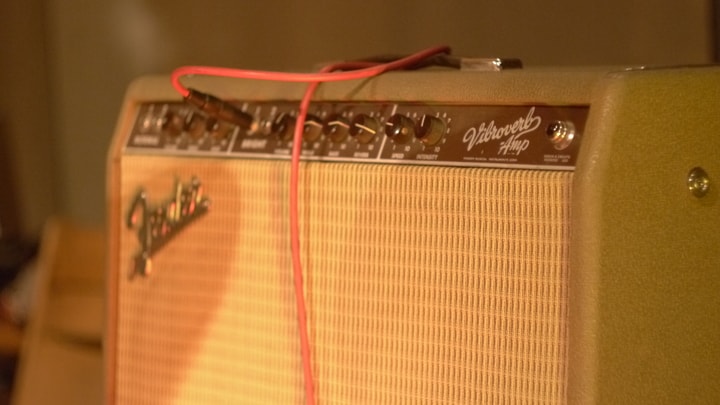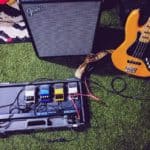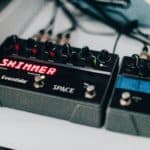There are many ways of shaping your guitar tone.
Some players rely mostly on their amps, while many others craft their sound exclusively with pedals.
For the latter, having a solid pedal platform amp is a must, since they still need a medium to get soundwaves in the air.
But once you settled down on a great pedal platform, it comes the time to start tweaking it.
Every setting can define your final tonal outcome.
So, what are the best settings for a pedal platform amp?
The best settings for a pedal platform amp can be achieved by first getting a great clean sound on it without pedals. Once you have that dialed in, you can start turning on and off individual pedals and matching their volume level with the one you got from the amp, and also EQing them individually.
In this article, I will go in-depth about how to set up your pedal platform amp to get the most of out it, I’ll give you some recommendations, and even alternatives.
After leaving this page you will have a clearer idea of how to get a great tone without spending hours tweaking the different knobs on your gear.
Are you ready to get started?
Let’s go!
What is a pedal platform amp?
Pedal platform amps are units usually with a very transparent sound, and lots of headroom. These characteristics make them great for taking pedals, particularly overdrive, distortions, and all other effects that commonly go in front of the amp.
Pedal platform amps are often kept completely clean, so they have the least influence possible in shaping the tone, and only work as a means of amplifying it.
Can any amp be used as a pedal platform?
Technically, yes, you can use any amp as a pedal platform, but results will vary heavily.
You see, for tones that are crafted exclusively with pedals, it’s better to get an amp with a transparent sound.
This means, that the amp doesn’t add or subtract too much from the signal that’s entering its input when passing through.
It’s not that a non-transparent amp will ruin the experience, but it will make it harder to control how the output sounds since you will be tweaking your pedals taking into consideration how the amp stages will reshape the tone completely.
Of course, you can get great sounds with these interactions, but those are unique explorations and not pedal platforms.
What makes a great pedal platform amp?
The main things that you should be looking for on a pedal platform amp are the following:
- A great clean tone: 99% of the time, your pedals will be running over the clean channel of your amp, for this is important that the base tone you could get is usable, and doesn’t shape your sound in any way you don’t like.
- A transparent preamp: Transparency for amps, means that the signal that comes into them stays more or less the same when it passes through its stages. That’s not what’s traditionally sought after for guitar amps, since they usually take a big part in shaping the tone, but fundamental for pedal platforms.
- Lots of headroom: Headroom is the amount of volume you can achieve before the power stage of the amp starts breaking up. A low headroom will make the amp saturate (and add distortion) at quieter volumes. Since we look for transparency in pedal platforms, the more headroom, the less saturation at high volumes, the better.
What are the best settings for a pedal platform amp?
The easiest way to set your amp up is to start with all your pedals turned off.
Start tweaking your amp until you find a clean tone you are comfortable with. A great method for doing so is by setting all the EQ controls to 12 o-clock and going from outside in.
By this I mean, first start with depth or presence, until you are comfortable with what you hear. After this, proceed with highs and lows. If you are happy, then go for mids.
Most likely, during this process, you will have to go back to the previous set of knobs to do some small tweaks. This is normal since amp settings tend to work in correlation with each other.
Once you have dialed it down, it’s a good idea to start going through your pedals one by one and also tweaking them.
Try to match their levels with the one you got from the amp, and also, for units with tone knobs, or individual EQ parameters, look for the most neutral setup, or the one that comes closest to the tone you have in your head.
As for volume, some people like maxing the master volume and controlling loudness with the gain knob, or the individual channel volume. It will mostly depend on taste and how your amp works.
Finally, settings for an amp will also vary among guitars.
What you dial in for a Stratocaster will sound completely different once you plug in a Les Paul.
Try not to change guitar while you are tweaking until you found out your tone, then you can write down or take a picture of the knob positions, switch guitars and start all over again.
Should you send your effects through the input or the FX loop?
The rule of thumb usually is sending overdrives, distortions, fuzzes, wahs, envelope filters, and any other fundamental tone-shaping effects in front of the amp, while leaving modulations such as choruses, flangers, phasers, and ambient effects like delays and reverbs for the FX loop.
The thing is, with pedal platform amps, since you will not be using the preamp (the stage which you hook after with an FX loop) to further shape your tone, you can most likely make everything work as intended by putting it in front of the amp, always using modulations and ambient effects at the end of the chain.
FX loops are useful when you get your distortion or overdrive from the preamp. If you were to do so and put a delay in front of the amp, the delay repetitions will be distorted.
That could be a great effect to use at times, but not what you probably expect a distorted guitar with delay should sound like.
By using your delay after the preamp (through the FX loop), the repetitions will not be distorted.
What are some alternatives to a pedal platform amp?
Pedal platform amps are probably the easiest way around for most players that rely heavily on pedals.
However, if you are looking for other options, a great alternative could be an FRFR speaker, or going through a PA system.
These options will require the usage of a DI box, to convert the instrument’s signal into a mic-level signal that’s what most audio units other than guitar amps take.

Hello there, my name is Ramiro and I’ve been playing guitar for almost 20 years. I’m obsessed with everything gear-related and I thought it might be worth sharing it. From guitars, pedals, amps, and synths to studio gear and production tips, I hope you find what I post here useful, and I’ll try my best to keep it entertaining also.





